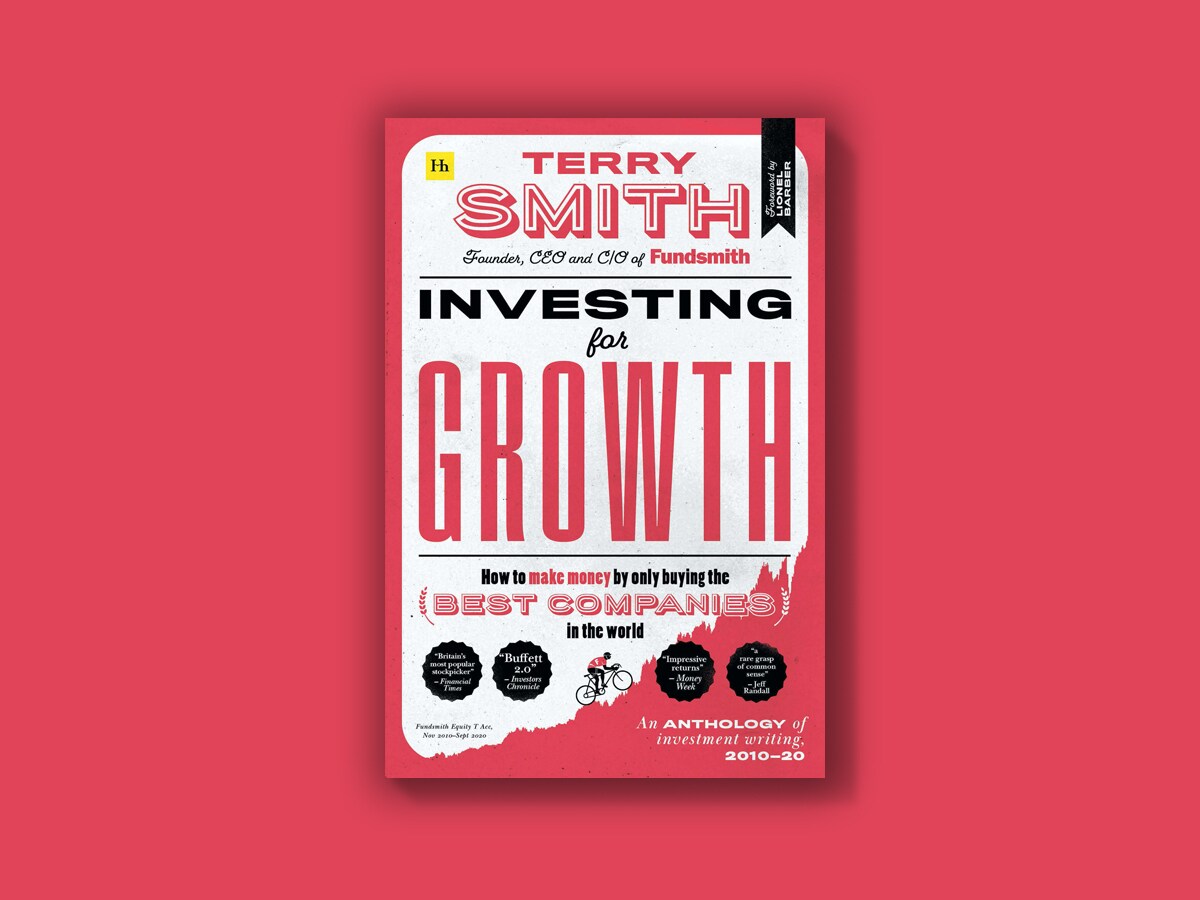Terry Smith is a big name in the hedge fund business. He has been working in the industry for more than 36 years and is the founder and CEO of Fundsmith, an investment fund that’s amassed $23bn in assets under management, according to Business Insider.
His most recent book, Investing For Growth: How To Make Money By Only Buying The Best Companies In The World, published by Harriman House in October last year, is an anthology of essays and letters written between 2010 and 2020.
The book begins with a foreword written by Lionel Barber, who was the editor of the Financial Times between 2005-2020, followed by an introduction from Smith titled The Lessons of the First Ten Years.
The ensuing chapters then follow a timeline, documenting Fundsmith’s ups and downs, while passing on lessons with titles including Ten Golden Rules Of Investment and Firms Which Provide Good Products Or Services Are Key To Investing.
The following is an extract from Investing For Growth, published with permission.
The Lessons of the First Ten Years
I decided to publish this book to mark the tenth anniversary of Fundsmith’s foundation. It comprises articles that I have published over that period together with my annual letters to investors in the Fundsmith Equity Fund.
At the outset, Fundsmith believed that direct communication with our investors was important because it gave us the best chance of explaining our investment strategy, how we were performing and what we are doing, without the intervention of intermediaries. This is particularly important when things don’t go well, which is inevitable from time to time, as it might prevent our investors taking actions which are injurious to themselves and our fund. To this end we not only publish an annual letter to investors, we also hold an annual meeting at which investors can pose questions and see us answer them live and in public. This is not mandatory and we are the only mutual fund in the UK that does it. It has become the best attended annual general meeting in the UK. This book is intended to contribute to that tradition of direct communication.
I thought I would use this introduction to spell out some of the lessons we have learnt over the past ten years. One is that Fundsmith’s investment strategy works. Over the past ten years to the end of August 2020, our T-class accumulation units – which is our most popular class with direct investors and one in which I am invested – have increased in value by 425% or 18.4% p.a. compared with a return of 193.5% or 11.6% p.a. for the benchmark MSCI World Index. And 54% for the FTSE 100 Index.
If you have read the financial press and commentary from various investment advisers you might be confused about why it has worked. You may have seen references to the period of low interest rates since the financial crisis of 2008–09 and the impact of quantitative easing in which central banks and governments bought large quantities of financial assets, which they say has benefitted the performance of stocks of the sort we invest in (and other stocks, I might observe).
You may encounter certain buzzwords like “bond proxies” – the stocks we invest in reliably produced profits and cash flows like bonds. Bonds did very well over this period, and so stocks of the sort we like were turned to as an alternative by investors when bond yields approached or went below zero. There was much talk in the early years of Fundsmith’s existence about our strategy being all about consumer staples even though these stocks were never much more than half the portfolio at their peak. Latterly it is said to be all about tech stocks that are slated as a bubble about to burst even though such stocks have never been close to half our portfolio.
I have been told by people that Fundsmith’s performance owes a great deal to fortunate timing in terms of when it was started, often by the same people who told me at the outset that it was a bad time to start a fund. The only explanation I haven’t heard very often is the correct one so I thought I would take this opportunity to try to set the record straight.
Continue reading for FREE
- Includes free newsletter updates, unsubscribe anytime. Privacy policy


